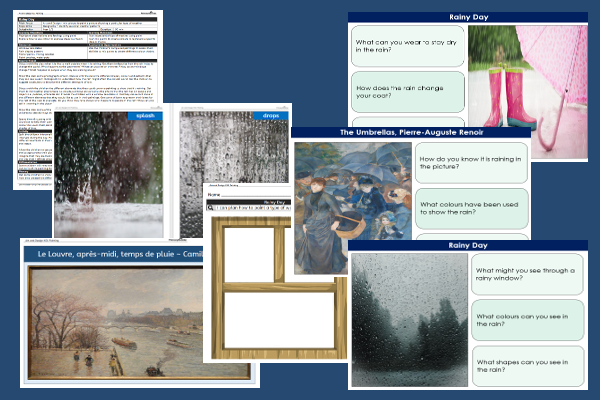Lesson Five – Rainy Day

This art and design teaching pack for Key Stage One gets the children to select and mix a range of different colour shades to use when painting a picture showing a view from a window on a rainy day.
The class can identify and explain how to use colours and brush strokes in their paintings to evoke different ideas and feelings about what it is like to be outside in the rain.
Download this teaching pack including a lesson plan, classroom activities and an interactive presentation to teach the children to select and mix a range of different colour shades to use when painting a picture showing a view from a window on a rainy day
Activities in this teaching pack include display posters to describe shapes, colours and patterns caused by the rain to use as a stimulus for their artwork and identify and describe how rain can be depicted in paintings and a template to record and plan elements for a painting depicting the effect of rain on a landscape.
The interactive presentation gets the children to explore how to mix colour shades to paint a picture showing a view from a window on a rainy day.
This lesson is part of a art and design scheme of work to get the children to practise different techniques of painting scenes depicting a specific type of rain to simulate natural phenomena in a range of different landscapes. There are teaching activities for shared learning, differentiated worksheets to support independent learning and interactive presentations to introduce concepts and key skills.
-

Money Coin Sums
Practise identifying, combining and recording sets of coins that can make matching sums that can be used when shopping for different products
-

Maths Number Assessment
Assess abilities in working with numbers to solve abstract and contextual problems when calculating sums, products and quotients using different techniques and methods
-

Animal Lists
Investigate how to compile lists using commas to present information about some of the special animals that live in habitats around the world
-

English Spelling Assessment
Assess abilities in spelling different vocabulary words based on the National Curriculum programmes of study for Key Stage One
